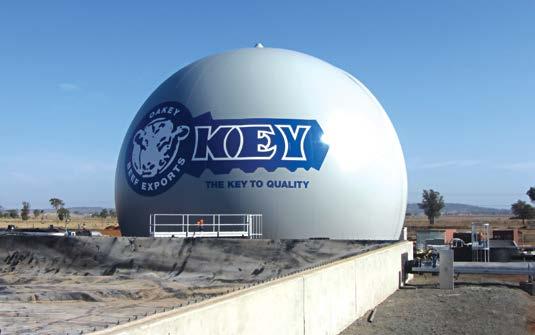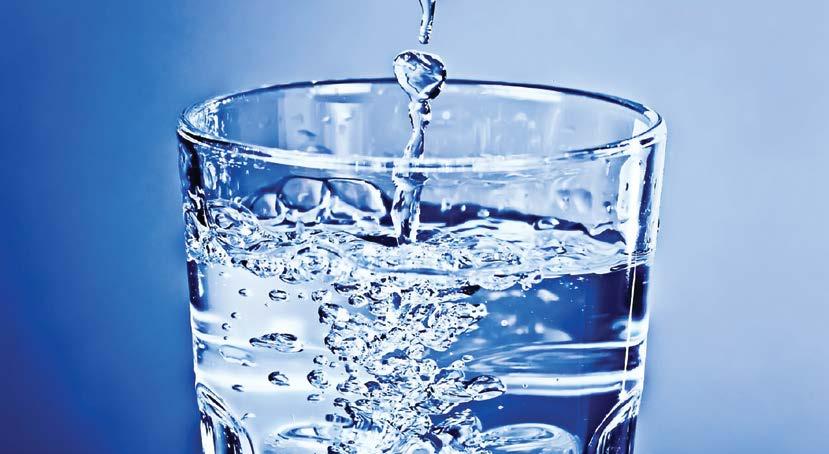
18 minute read
Water and Wastewater
Steps to follow for a hygienic and safe potable water installation
Press-fit pipe connection systems specialists SANHA highlight some of the issues surrounding lead and other contaminates in potable water supply pipes in buildings and residences.
Advertisement
Water is the most important foodstuff of all and is generally protected: It must be hygienically impeccable and without any harmful effects on health. Therefore, adverse effects of all sorts and particularly its contamination with lead must be avoided.
The hygiene of potable water and its compliance with generally prescribed limits are sensitive and complex issues that must be taken into account in construction projects. In order to achieve a satisfactory and reliable result, it is necessary to set the course already during the planning phase. This is because the contractor, or the building owner and planner will bear the responsibility and can be called to account if problems or hazards arise.
There are many reasons that can lead to quality losses, including the type of pipeline installation, the use of unsuitable materials, stagnation in less or unused pipeline sections, or inadmissible heating. By neglecting these factors in a potable water installation may lead to the growth of bacteria that may cause infections. A key point is the lead content of the water - in this case it is important to look closely at the limit value.
The following data on potable water quality contributes to the achievement of a high-quality facility designed for safety and sustainability. After all, it must meet the functional requirements for a calculated service life of 50 years.
IT MAY BE NEW, BUT IS IT LEAD-FREE? Newly constructed buildings may easily give the impression that the systems installed for drinking water are lead-free. According to leading press-fit pipe connection systems specialists SANHA, that's simply not the case.
It is known that too much lead leads to health hazards, especially in unborn children, infants, and toddlers. In order to guarantee the quality of potable water, the lead content has therefore been limited to 0.01 mg/l by the Drinking Water Directive. Half of this quantity - i.e. a maximum of 0.005 mg/l - may be discharged by the water supplier. The second part could be entered by the domestic installation in purely mathematical terms. The limit value of 0.01 mg/l thus refers to the sum of the total lead input.
This contribution is non negligible: all components in contact with water after transfer to the building - from fittings and pipe connections to water meters, as well as the composition of the water can affect the lead content. The United Kingdom of Great Britain and Northern Ireland, France, the Netherlands and Germany have agreed in 2011 to harmonise the tests for the hygienic suitability of products and materials in contact with drinking water. This 4MS cooperation is now called the "4MS Initiative" (4MSI) with a view to expansion. The metallic materials on the 4MSI list form the basis for the products that will eventually be installed in buildings. According to the current status, the acceptable list also includes materials that contain a minimum amount of lead, for example as an alloy component or as an unavoidably accompanying element.
DRASTIC CONSEQUENCES This results in the following: even if only products manufactured from the approved materials are installed, the limit value of 0.01 mg/l may still be exceeded. This could be due to the sum of the installed components, for example. In such a case, the water must no longer be used for drinking and food preparation and the search for the causes and the remedy will then follow - a complex and possibly costly process.
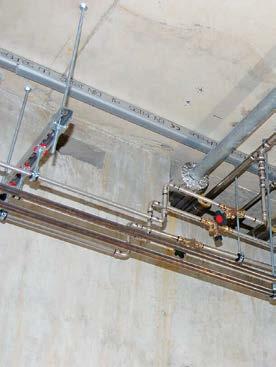
A tightening of the limit value is currently being discussed. This would have the effect of further reducing the amount of lead that can be introduced by all components. If half of this amount were to continue to be accounted for by domestic installations, the lead problem could become more acute.
THE SOLUTION: LEAD-FREE This problem can be avoided by choosing lead-free components from the point of transfer of the water supplier to the domestic installation. Many system fittings made of lead-free silicon bronze (CuSi) in different series are available today. As they do not contain the undesirable element, they do not release any into the drinking water. This is proven by the numerous certifications of the quality manufacturer such as SANHA. The high-quality stainless steel components are also suitable for lead-free installations.
In addition to the "lead-free" aspect, the material quality also plays a role. Silicon bronze is extremely resistant to dezincification and stress corrosion cracking. Thanks to its extremely pure surface and resistance to dezincification, the PURAPRESS fitting series from SANHA, for example, represents a very hygienic premium solution. The high material density also means there is no casting porosity. If the components are professionally installed, the result is a high-quality potable water system. There are other important aspects to consider during the planning stage.

MINIMISE STAGNATION TIMES A demand-based design ensures that a sufficient change of the water in the system can already take place during normal operation. The content of a drinking water system should ideally be exchanged after a maximum period of 72 hours.
The prerequisite for this is an exact pipe network calculation, whereby the actual individual resistances and a simultaneity adapted to the user behaviour must be taken into account. Instead of a T-installation, the tapping points are now connected in loops. Regularly used tapping points can be arranged at the end of this loop installation.
Alternatively, an entire floor line can be designed as a ring line. Both installation methods ensure excellent water distribution in the floor pipes by means of a flexible and low-connection pipe installation. For low pressure loss installation, flow-optimised elbows, T-pieces and threaded connection parts, wall angles or wall discs as well as double wall discs made of silicon bronze and stainless steel are available.
SPACING AND INSULATION The temperatures of cold and hot water pipes must be limited by proper installation and insulation to prevent bacterial growth. Important measures are: sufficient distance between the cold water pipes and heatcarrying installations, no penetrations through heating screeds and separate shafts for risers. This guarantees that cold water is heated up to a maximum of 25 °C and hot water not below 55 °C. These values apply to all parts of the system.
CLEAN PRODUCTS - CLEAN PROCESSING In addition to the material, the handling of the products has an effect. Thus, qualityoriented companies ensure that the parts in contact with water are carefully protected after production.
The pipes are fitted with sealing caps and the fittings are packed hygienically in protective bags. The caps and the fittings are only removed from the protective bags directly before installation. The contractor inspects all components for cleanliness before installation.
In case of interruptions during installation, open pipe ends must be securely closed. This is to limit the quantity of dirt particles and moisture that may penetrate the installation as much as possible.

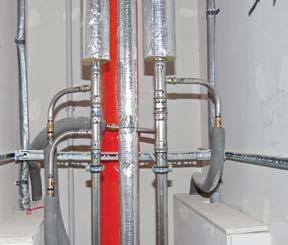
The former could form a breeding ground for micro-organisms, while moisture in combination with oxygen may lead to corrosion in base metals.
LEAK TEST AND PROPER TRANSFER A leak test must be carried out before insulating the pipes and closing the cut-outs.
Last but not least, contractors and installers are obliged to hand over the drinking water installation to the user and to familiarise him with all hygiene and safety-relevant operations of the system.
Then the drinking water system can be permanently operated as safely as it was planned, installed and tested.
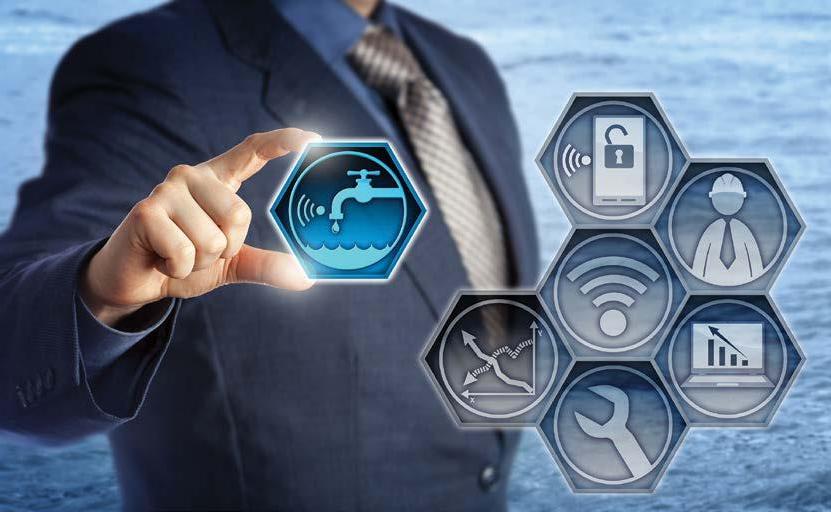
Xylem, a leading global water technology company dedicated to solving the world’s most challenging water issues, recently launched a new multi-disciplinary centre for water, wastewater and energy technologies at the company’s regional headquarters in Singapore. Located at ICON@IBP, the expanded headquarters brings the company’s regional R&D capability into a new Xylem Technology Hub Singapore (XTHS), alongside its regional leadership and personnel. The XTHS represents Xylem’s continued investment in sustainable water technologies, and research at the new centre will focus on developing breakthrough technologies in water distribution and water and wastewater treatment. One of the first projects Xylem is pursuing at the centre is a collaboration with A*STAR’s Institute of High Performance Computing (IHPC). Xylem will combine its world-leading expertise in water technologies with IHPC's expertise in computer modelling and simulations. Together, they will evaluate fluid-structure interaction in pipe flow to develop a new computational fluid dynamics model tailored for Xylem’s applications such as SmartBall and PipeDiver. The model will then be applied to the design and testing of other advanced products and solutions to be deployed in treatment plants and water distribution networks.
“This new multi-disciplinary centre will create ample opportunities to innovate and collaborate with our customers, as we work with them to tackle the region’s greatest water challenges, including water scarcity, affordability and infrastructure resilience,” said Mr Patrick Decker, president and CEO of Xylem.
“Bringing research and development capability into our regional headquarters in Singapore puts all of Xylem’s marketleading technology capability in one location, focused on the region’s water technology and infrastructure solutions.”
Dr Lim Keng Hui, executive director of IHPC, said, “We are glad that Xylem has decided to set up its regional headquarters in Singapore, to be plugged into the robust R&D ecosystem here. A*STAR is happy to contribute its deep capabilities in modelling and simulation for sustainable water technologies, that will lead to good societal outcomes for Singapore and the region.”
In addition to the research and development Hub, Xylem’s new office will feature a customer experience centre and a training centre, bringing together all of Xylem’s sales, customer support and technical capabilities for Southeast Asia.
“We’re excited about the energy and innovation that’s possible when we focus our resources, talent and technologies in one centre like this,” continued Mr Decker. “This new integrated facility will offer our customers and partners an immersive technology experience, as well as a stateof-the-art training centre. Singapore’s water sector continues to grow and innovate, so this is a great location to work together on solving the region’s water challenges.”
Work at the centre will also be supported by Xylem’s ongoing partnership with PUB,
Singapore’s National Water Agency, to address challenges brought about by climate change and increasing water demand. Xylem continues to work with PUB on the development and implementation of technologies in common areas of interest, such as high-precision leak detection and condition assessment technologies, and using data analytics to pin-point water loss.
“Singapore is an internationally recognised model city for integrated water management and a thriving global hydrohub because of our strong belief in R&D and continuous innovation to tackle current and future water challenges,” said Mr Ridzuan Ismail, director, Water Supply Network, PUB.
“We are happy to work with Xylem to develop novel water solutions to enable IoT and data analytics to enhance our water network management. For instance, with predictive maintenance, we can achieve better resource optimization and extend asset life of the infrastructures, thereby reducing water loss and strengthening the resilience of our water supply.”
“We are delighted with Xylem’s expansion in Singapore, including the setting up of its new technology hub,” said Mr Lim Tse Yong, director, Capital Goods, Singapore Economic Development Board (EDB). “This is testament to Singapore’s continued attractiveness as a location for companies to innovate and forge collaborations in developing solutions to meet the region’s needs. We look forward to the exciting technologies and solutions that Xylem will create in partnership with our innovation ecosystem.”
Xylem first entered the Singapore market in 1982 and has since grown and expanded its facilities. The expertise located in Xylem’s new Singapore office is focused on bringing new technologies to the region, such as the Advanced Infrastructure Analytics (AIA) platform, the Advanced Metering Infrastructure (which has more than 12 million water end points and 14 million combination-utility end points globally) and a powerful portfolio of digital solutions to optimize water networks.
ABOUT XYLEM Xylem (XYL) is a leading global water technology company committed to developing innovative technology solutions to the world’s water challenges. The Company’s products and services move, treat, analyse, monitor and return water to the environment in public utility, industrial, residential and commercial building services settings. Xylem also provides a leading portfolio of smart metering, network technologies and advanced infrastructure analytics solutions for water, electric and gas utilities. The Company’s approximately 17,000 employees bring broad applications expertise with a strong focus on identifying comprehensive, sustainable solutions. Headquartered in Rye Brook, New York, with 2018 revenue of $5.2 billion, Xylem does business in more than 150 countries through a number of market-leading product brands. For more information, please visit: www.xylem.com
ABOUT A*STAR The Agency for Science, Technology and Research (A*STAR) is Singapore's lead public sector agency that spearheads economic oriented research to advance scientific discovery and develop innovative technology. Through open innovation, A*STAR collaborates with its partners in both the public and private sectors to benefit society. A*STAR's Institute of High Performance Computing (IHPC) was established in August 1998 to provide leadership in high performance computing as a strategic resource for scientific inquiry and industry development. It seeks to power discoveries through advanced methodologies, techniques and new tools in modelling, simulation and artificial intelligence. Its core research areas are in the realm of complex-coupled systems, mechanics and fluid dynamics, large-scale systems, digital modelling, adaptive and collaborative computing, data mining and analysis, computational electronics and electromagnetics, computational materials science and chemistry. For more information on A*STAR, please visit: www.a-star.edu.sg

Below: Magnified images showing concrete made with treated slag (centre), conventional aggregates (left) and raw slag (right). The treated slag forms a more seamless bond with the cement paste, making the concrete stronger.
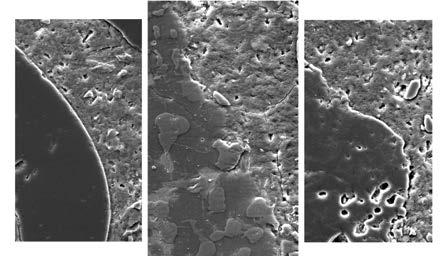
Researchers have shown how a by-product of steel making can be used to both treat wastewater and make stronger concrete, in a zero-waste approach to help advance the circular economy.
Produced during the separation of molten steel from impurities, steel slag is often used as a substitute aggregate material for making concrete.
Steel slag can also be used to absorb contaminants like phosphate, magnesium, iron, calcium, silica and aluminium in the wastewater treatment process, but loses its effectiveness over time.
Engineering researchers at RMIT University examined whether slag that had been used to treat wastewater could then be recycled as an aggregate material for concrete.
The concrete made with post-treatment steel slag was about 17% stronger than concrete made with conventional aggregates, and 8% stronger than raw steel slag.
Water engineer Dr Biplob Pramanik said the study was the first to investigate potential applications for “sewage-enhanced” slag in construction material.
“The global steel making industry produces over 130 million tons of steel slag every year,” Pramanik said. “A lot of this by-product already goes into concrete, but we’re missing the opportunity to wring out the full benefits of this material.”
“Making stronger concrete could be as simple as enhancing the steel slag by first using it to treat our wastewater.”
“While there are technical challenges to overcome, we hope this research moves us one step closer to the ultimate goal of an integrated, no-waste approach to all our raw materials and by-products.”
In the study, civil and water engineering researchers found the chemical properties of the slag are enhanced through the wastewater treatment, so it performed better when used in concrete,” Pramanik added. “The things that we want to remove from water are actually beneficial when it comes to concrete, so it’s a perfect match.”
Civil engineer Dr Rajeev Roychand said the initial study was promising but further research was needed to implement the approach at a larger-scale, including investigating the long-term mechanical and durability properties of enhanced slag.
“Steel slag is currently not in widespread use in the wastewater treatment industry – just one plant based in New Zealand uses this byproduct in its treatment approach,” he said.
“But there is great potential here for three industries to work together – steel making, wastewater treatment and construction – and reap the maximum benefits of this byproduct.”
The study, ‘Recycling steel slag from municipal wastewater treatment plants into concrete applications – A step towards circular economy’, with RMIT School of Engineering co-authors Professor Sujeeva Setunge and Professor Kevin Zhang, is published in Resources, Conservation and Recycling (DOI: 10.1016/j.resconrec.2019.104533).
Major wastewater infrastructure upgrade to cater for Drouin’s growth
Victoria’s Gippsland Water is one step closer to delivering an upgraded wastewater treatment plant in Drouin to cater for the town’s booming growth.
Acting Managing Director Simon Aquilina said site preparation works were completed in June and the major construction contracts were signed in December, allowing construction to begin in February.
Mr Aquilina said the $50 million project would result in cleaner wastewater, greater safeguards for public health and the ability to recycle more wastewater for irrigation.
“Drouin’s population is growing rapidly and this means we need to expand the capacity of the existing wastewater treatment plant to meet the town’s needs.”
“Building a new mechanical plant at the existing site offered the best value for our customers,” he added. “The design also includes solar panels onsite to help reduce the carbon output of the new plant.”
Mr Aquilina explained the new mechanical plant will work together with the existing lagoon system to produce wastewater that can be returned to the environment.
“The treated water released from the new treatment plant will be of higher quality, which will better protect the ecology of local waterways and Westernport Bay.”
Mr Aquilina said the major construction contractor would work with GROW Gippsland to provide opportunities for local subcontractors.
The main construction of the plant should be complete by mid-2022 with the plant fully operational by the end of 2022.
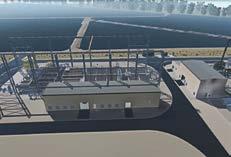
Bubble tech blows microplastic problem out of the water

An innovative Australian technology that uses bubbles to remove contaminants from water offers a solution to an emerging global pollution crisis – microplastics.
The technology belongs to EVOCRA, an Australian water treatment company that was formed in Tasmania in 2011. The patented process, known as Ozofractionative Catalysed Reagent Addition or OCRA, literally floats the microplastic out of the water where it is collected and sent for recycling.
EVOCRA’s Managing Director Mark Sykes says OCRA is a solution for many water-based environmental challenges.
“Microplastics are plastic items smaller than 5mm that are found in everyday products such as sunscreen, shampoo and detergent. Too small to be filtered out in the treatment plants, they wash into waterways where they harm our aquatic wildlife,” he said.
“OCRA offers a positive solution to this complex environmental issue. The technology can be applied as a pre-treatment, that is, before the plastic enters the sewerage system or at the treatment plant to remove the particles before discharge.”
World leader in microplastics research Dr Thava Palanisami is working with Evocra and is supportive of their work in this area.
“Evocra was an early entrant into finding a solution for microplastics which is a potential planetary boundary threat. OCRA has demonstrated it has a part to play in the solution of remediating the 12.7m metric tonnes of plastic litter than enter the ocean each year”, he said.
Plastics can enter the human food chain and when ingested by marine life, can potentially cause death from starvation.
Mr Sykes said the applications for OCRA were vast with capability to treat minerals and contaminants in mining, oil and gas extraction, agriculture and aquaculture, high intensity industrial manufacturing, municipal water and wastewater treatment, and contaminated land remediation.
The world’s largest environmental consulting firm, Arcadis, recently signed an exclusive licensing agreement to use OCRA to treat toxic PFAS (per-and poly-fluorinated alkyl substances), a component of products such as aqueous fire-fighting foams (AFFS), household chemicals, carpets and some clothes.
In the OCRA process, chemicals or metals attach to tiny, charged micro-bubbles, each the size of a width of hair, and balloon out of the water. In a world first, the technology was successfully used to help remediate a PFAS impacted industrial sewer resulting from a firefighting foam spill at the Brisbane Airport in 2017, removing greater than 99.9% of contaminants.
Mr Sykes said OCRA was addressing old, new and future water contamination issues.
“Our first commercial application was in acid mining drainage which has been an ongoing problem for the mining sector. PFAS is an international challenge we are facing right now and microplastics are certainly an emerging issue. Evocra are passionate about delivering technologies that have high social impact and that offer solutions across the spectrum in Australia and globally.”
THE ULTIMATE RENEWABLE ENERGY SOURCE SEWERAGE
In the search for new and sustainable energy sources few people realise that there is a energy source flowing beneath the surface of our cities SEWERAGE! This abundant, free energy source remains mostly untapped.
The “Sharc” is a Waste Heat Recovery & Heat Rejection System suitable for a range of applications including, multi-unit apartments, aged care, hospitals, commercial buildings and district energy.
Energy savings and primary energy cost reductions Reduce building CO2 & GHG Easy Install into New or Existing infrastructure Trouble free operation & maintenance Long product life- cycle
HOT WATER SERVICE
Using the waste water from the building the Piranha is a self-contained HEAT PUMP specifically designed to extract thermal energy from waste water for Domestic Hot Water Heating.

COP’s of 5.0 for 50-200 Apartments, Aged Care, and Hospitals to produce 7500-15000 litres of Hot Water per Day

